Hot tips to take your froggin’ to the next level
Frog fishing is profound fun — if you’re up to the challenge and frustrations that come with it. Here’s how you can take your frog game to the next level this season.
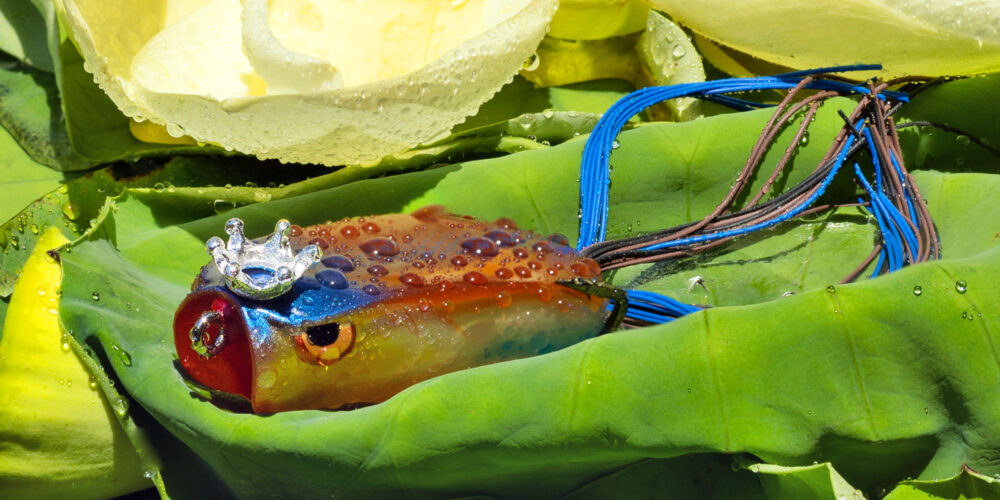
You feel it coming. Anticipation. Excitement. You sense it in the air, hear it in the mats, feel it stirring in the pads. The stretch of matted grass or duckweed that pleasure boaters find unsightly is your playground, and you know it’s just a matter of moments before a hungry bass comes charging through it.
It’s froggin’ fever! Time to pull out a hollow-bodied frog and get in on the most exciting action of the season.
Frog fishing is filled with suspense and action, punctuated by washtub boils and explosive strikes, packed with the emotional highs and lows of fish caught and blowups missed, producing memories of giant bass clothed in grass as they are hoisted over the gunwale.
Frogging’s appeal goes beyond the excitement of the visual strikes. There’s artistry on display when an accomplished frogger is at work.
“The frog is a bait that you can give life to,” says frog maestro Dean Rojas. “You control what that bait is doing on the surface. That’s the cool factor!”
We mined the experience of four MLF pros for tips on how to improve one’s frogging game.
Froggin’ time
Frogs tend to work their best magic around cover — mats, pads, laydowns, stumps, docks and the like.
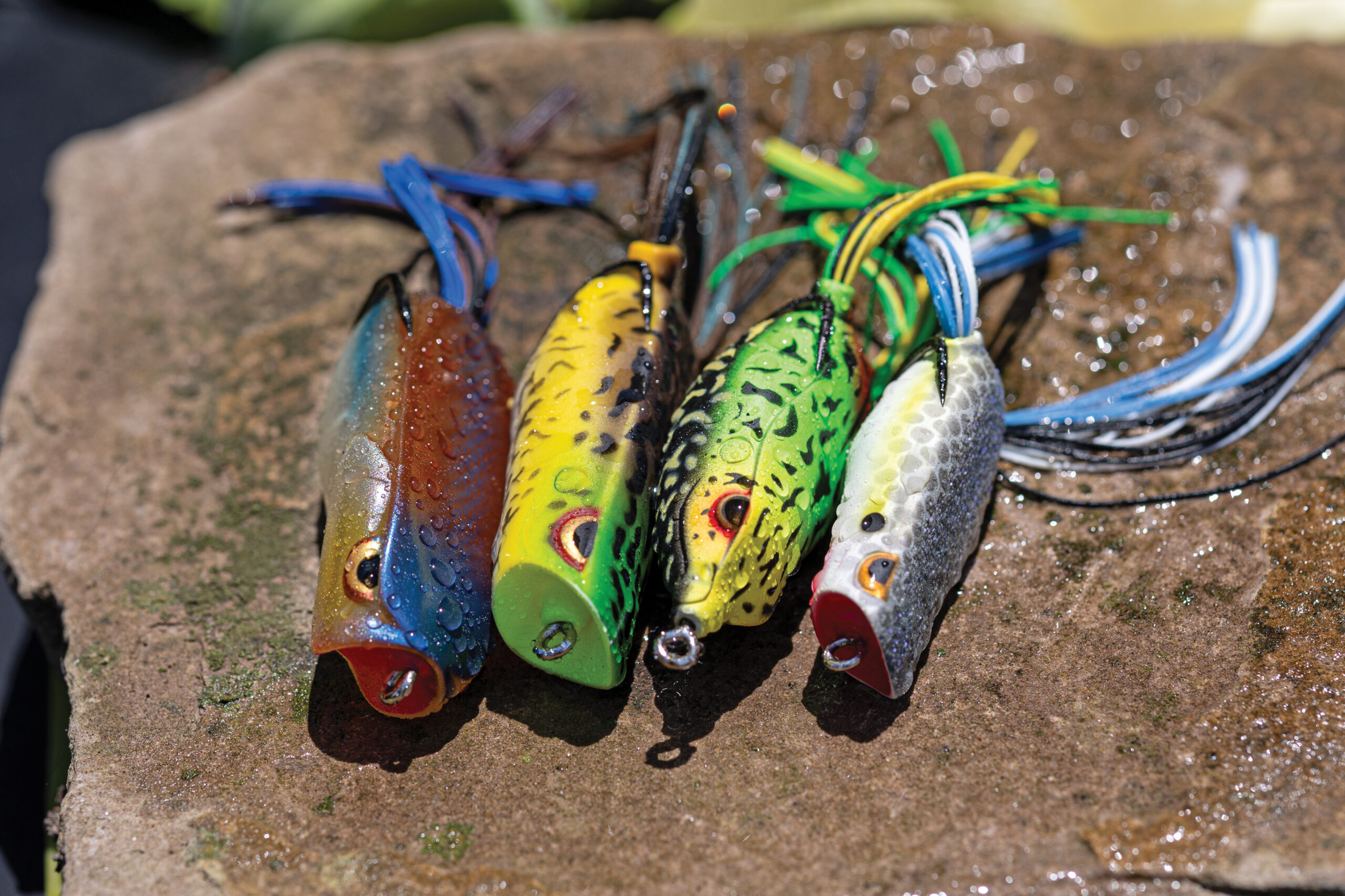
“Key in on shady areas,” said Mitch Crane of Columbus, Mississippi. “Froggers don’t mind sunny days because it isolates fish in those shady areas or isolated floating patches of grass. Those are the things we key on.”
Although frog fishing is linked with summer heat, frogging experts find it a far more versatile bait with three- or even four-season appeal.
Fred “Boom Boom” Roumbanis has taken bass on a frog in the California Delta in 52-degree water in January. He finds 54 degrees a more typical starting point, but he will tell you that prime froggin’ time is easier to sense than to define.
“A lot of it is muscle memory,” said the pro from Russellville, Arkansas, who has rods rigged with his namesake Boom Boom Frog and Boom Boom Poppin’ Frog on his deck most of the year. “It’s instinctive. I try hard to be the first guy on that bite, paying attention to water temperature and everything going on around me. It doesn’t take long if the sun heats the water and the weather gets right.”
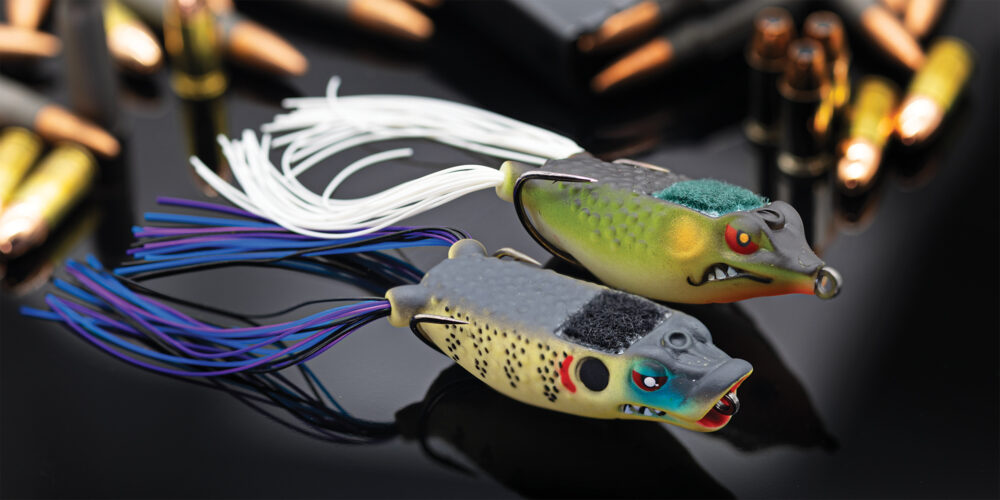
Frogs are year-round tools for Florida pro John Cox, too, but “prime time” for him is a no-brainer.
“The frog bite is really happening in the thinner stuff, around trees and undercut banks, when you see bluegills coming after it,” Cox said. “That seems to be the trigger point, much like shad hitting your spinner blades during the shad spawn. You just know they’re going to eat that frog.”
A little about legs
Hollow-body frogs are typically fitted with rubber strand “legs.” Few anglers, however, find those legs ready for action right out of the package. Trimming them to preference is a common ritual.
Rojas designed the SPRO Bronzeye Frog with a leg length he found ideal for his “walk-the-dog” presentation, but not everyone agrees.
“A lot of guys like to chug a frog, so we don’t cut the legs too short,” Rojas said. “Guys use frogs differently. We don’t want to alienate anybody. They can always trim.”
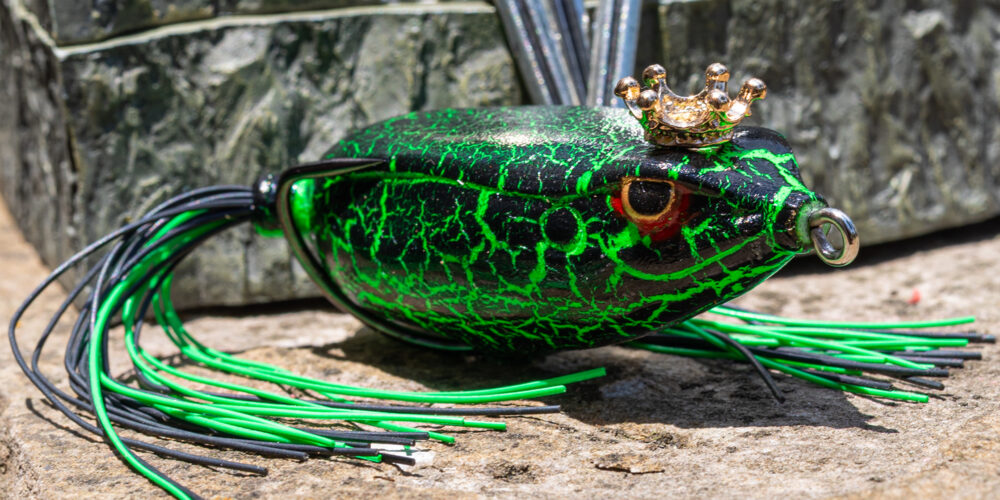
And trim most pros do, to their own “leg” logic. Crane typically takes about an inch off his frog legs, often thinning them as well.
“Legs really weigh a frog down, and I want my frog to lay as flat as it can when I’m walking it in open water,” he said. “I probably cut four or five strands. That allows me to walk it almost in place without moving it forward in holes or around isolated cover. But if I’m chugging a frog (over a mat), that butt-down frog may be better. It depends.”
He pays attention to leg color, too.
“I don’t like bright legs,” Crane said. “If a frog has bright strands, I will generally pluck those out because I want a bass totally focused on the body of the frog, not the legs.”
Cox will trim legs to shrink the overall profile of his frog in a pressured stretch of water. If that isn’t enough to elicit strikes or get bass to commit, he’ll downsize to a smaller frog.
Walk this way
When fishing mats, lily pads or other heavy cover, a chugging presentation — getting the frog to surge in a sporadic, lifelike manner — is the preferred (if not only) option.
But open-water areas at the edges of cover give the angler a chance to demonstrate his “walking” artistry by imparting to the frog a side-to-side sway reminiscent of a stunned, confused or injured baitfish, frog or mouse.
A walking frog is most seductive when it sashays annoyingly in an area where a bass has staked a claim. For most anglers, the walk is executed with a downward twitch of the rod tip. Keeping slack in the line is critical. It gives the bait freedom to swing to either side while advancing toward the angler little or not at all.
“You want a little more slack line than you think you need when you’re walking that frog in place,” Crane said. “You don’t want to pull it far from cover.”
Roumbanis switches to a slower reel to enhance the effectiveness of a walking retrieve.
“I like to switch from my usual 7:1 to a 6.5:1 gear ratio reel if I’m working that bait in a small area,” he said. “It won’t pick up line as fast when you’re twitching it.”
Pause the bait intermittently during the retrieve. Many strikes come during that pause.
Practice walking a frog so that you can impart that action blindly — literally. A frog is made to skip, so learn to skip it with confidence under willow trees, boat docks or other overhanging cover. Seawalls, flooded buck brush, and riprap also represent good areas to walk a frog.
True colors
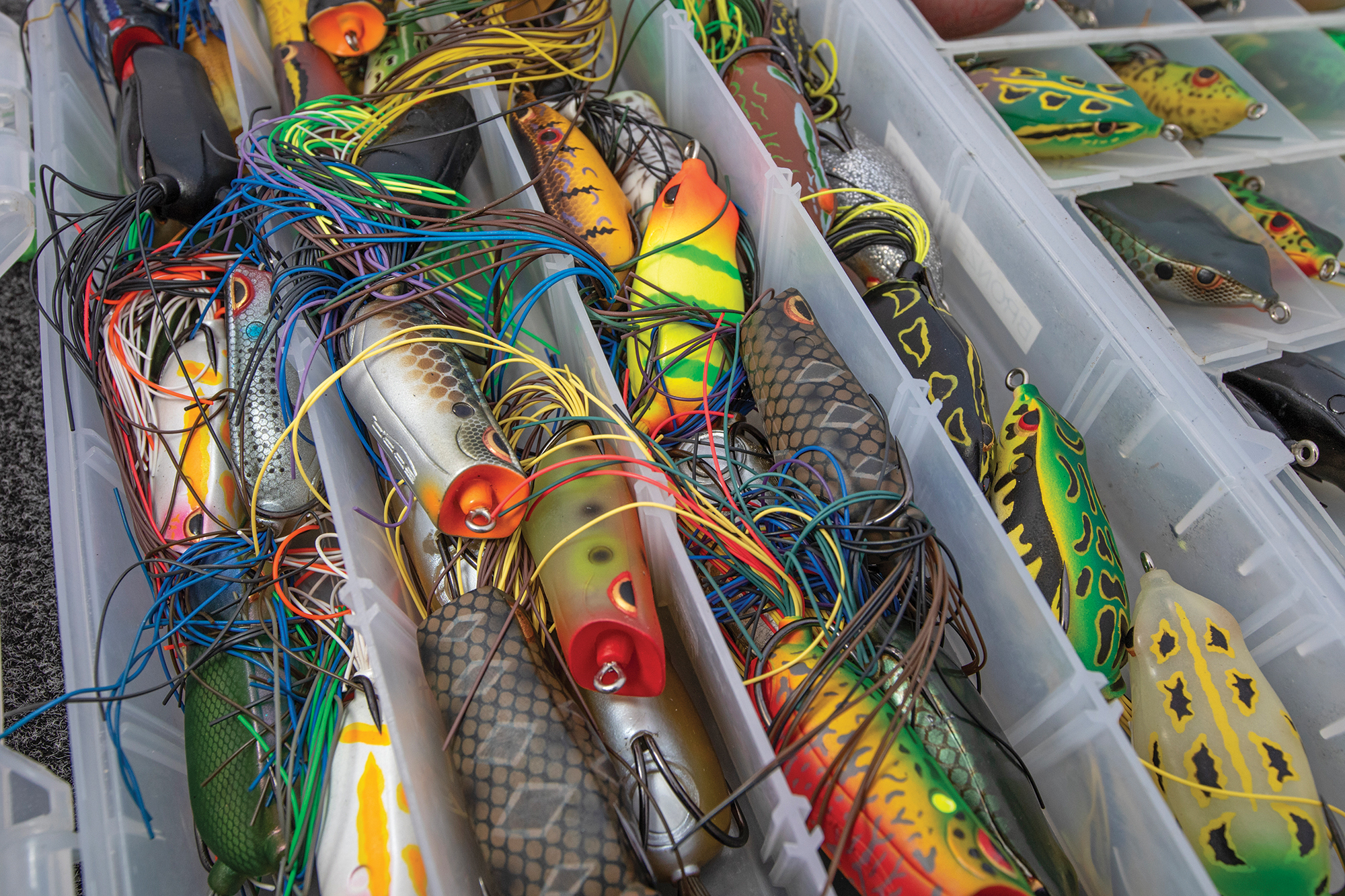
To a bass, a frog is not always a frog. It can be a mouse, a rat or a bird, too. But it’s most likely that bass mistake our hollow-bodied offerings for baitfish.
Today’s frogs come in an impressive and sometimes wild array of colors. A simple rule of thumb on color selection is to use a dark-bodied frog that silhouettes through a mat against a bright sky and lighter-colored frogs on dark days.
Beyond that, picking frog colors and patterns is largely a match-the-hatch judgment.
“Our fish are shad eaters,” Crane said of bass from the Deep South. “We always have a shad-color frog tied on. It’s not white but a silver color, something that gives flash — more like a shad than a bluegill.”
White frogs have an almost cult-like regional following in scattered pockets of the country. Roumbanis feels that white “magnifies in the water,” whereas “a black one silhouettes.” He has a white frog with sky blue and chartreuse highlights, called Diva, in his Boom Boom line. It can be deadly in early mornings during a shad spawn. For a bluegill imitator, he opts for his Gilly and Fred’s Frog patterns. His Kelly Green Boom Boom is an “old school” frog color.
Color preferences can differ greatly from region to region. Crane notes that brown colors — particularly reddish browns — are popular in the North, for reasons unknown.
Where bluegill are primary prey, green pumpkin and other bream-type colors prevail.
“Sometimes I like a light yellow or an orange throat,” Crane said. “Light yellow for a female; orange for a male bluegill. Bass really key in on that throat patch.”
Then there are the wildcard colors. Roumbanis carries a yellow-headed blackbird color called Dirty Bird seemingly made to order for bass on California’s Clear Lake.
“I always have a black-and-red frog close at hand,” Crane said. “I don’t know what it is about that little bit of red in there. It just triggers big bites.”
Reading the mats
Much frogging action takes place in dense mats, thick jungle cover comprised of aquatic plants such as hydrilla, Eurasian milfoil, filamentous algae, duckweed and assorted assemblies of matter living and dead. That often necessitates a different approach than walking the bait in open water.
“There are times with duckweed or algae or matted hydrilla where you need to use a heavier frog, something that will go through that stuff and sit lower in the water,” Rojas said. “With a lighter frog, bass are more likely to knock it off the mat or totally miss it.”
Mats are never uniform in thickness. They vary in density and composition. Some mats are comprised of fresh growth, others of dead or decaying matter. The best froggers pay close attention to patterns within mats. One key feature can be thinner sections, often identified by a variation in color.
“I was the last man standing in a tournament on the Mississippi River near La Crosse, Wisconsin,” recalls Roumbanis. “Half the field was throwing frogs to the mats. The only thing I was doing differently was making more accurate casts to areas with lighter color and targeting those areas. I didn’t waste time throwing to super dense stuff.”
Crane agrees. “You want holes in that upper mat,” he said. “Any time you chug that frog in thick cover and you see the water ripple around the frog, you know the mat grass is thin there. So you look for the ripples and other signs. Maybe brighter green grass or cheesy areas where fish are hanging out. Always pay attention to where you’re getting bites in heavy cover.”
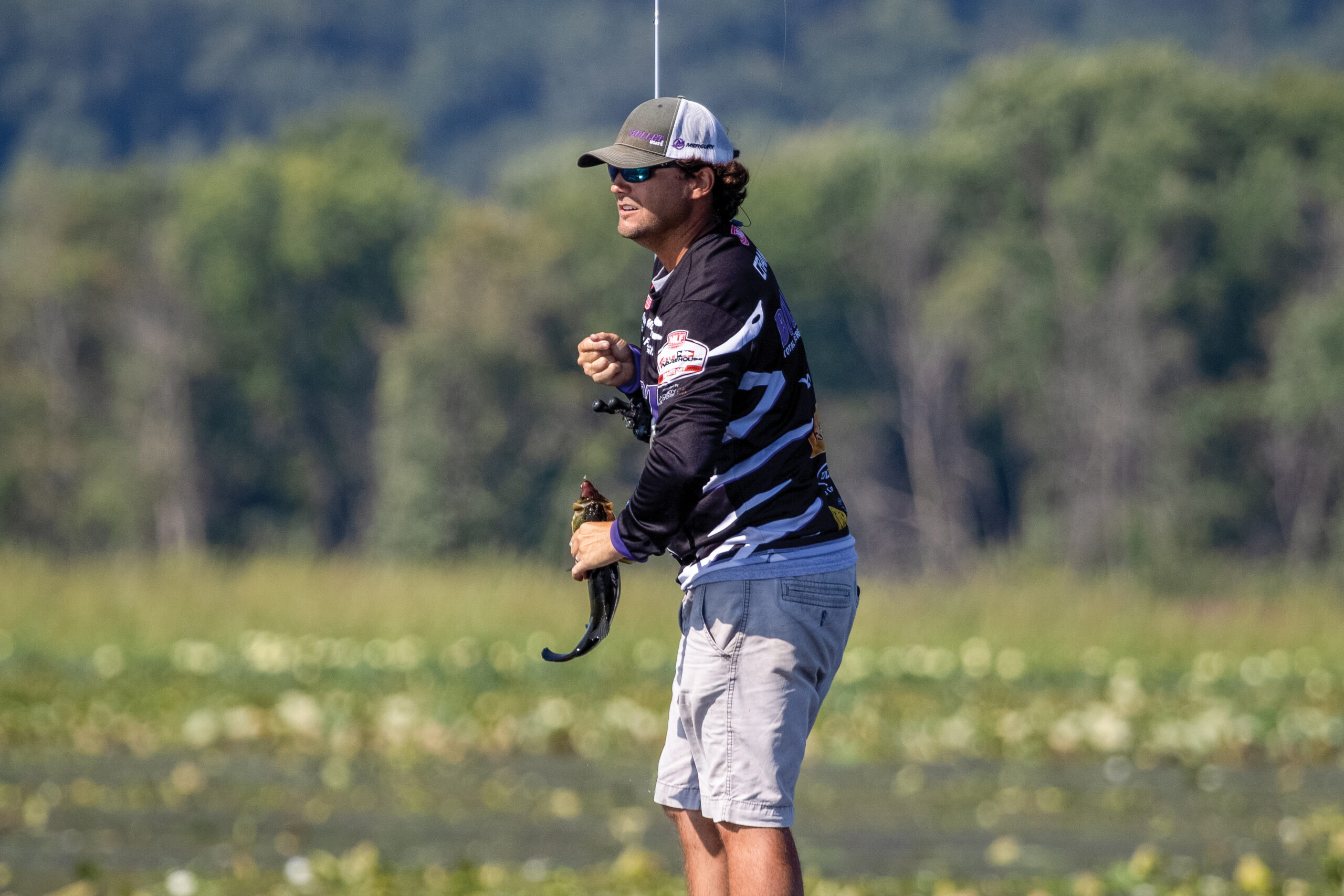
Modifications
There’s no end to the things anglers do to get the most out of their frogs. “They bend out hooks, add weight, cut the tails off or half off, paint them, boil them, do things to make them softer or harder,” Rojas said. “In the end, you need to balance attributes that improve your hook-up ratio with those that affect its overall usability.”
Hookup ratios tumble in the mats. Bass are apt to inhale a mouthful of salad with the frog, if they reach the bait at all. Frogging aficionados often trick out their frogs to help bass find and engulf them.
“Some put glass rattles in the frog when fishing heavy cover,” Crane said. “It gives them something to home in on. You can also add BBs or a 1/4-ounce tungsten weight inside the frog. It makes the frog sag through the mat.”
In pressured areas, Cox will insert a bell from a craft shop or a rattle into the body of his frog.
“A frog that fills with water can work to your advantage in a cheese mat, as well,” he said. “It sits lower in the mat, and fish are less likely to knock it out of the water. Sometimes I’ll just add a tungsten nail weight.”
Search frog
The hollow-body frog may be one of the game’s most underrated search baits. Work it over a mat or grass-filled flat and bass are apt to show themselves.
On practice days, Rojas bends the hooks into the body of the frog to prevent hook ups. He works the bait quickly, noting areas with concentrations of bass and where bass are situated with respect to the cover.
“You can cover a lot of water, break down an area quickly and identify the high-percentage spots,” he said. “When you’re trying to break down a 30,000-acre reservoir, you need to utilize your time effectively.”
Some frog anglers remain in search mode during tournament time. They work their frogs quickly, waiting for a fish to show itself.
Cox always has a follow-up bait ready to pitch to the exposed location — a General, Gilly or Creature Hawg from the Berkley PowerBait line. Rojas is similarly armed, usually with a Fighting Frog or Trick Stick from Big Bite Baits.
Dare to live the froggin’ life
Want to be a better frogger? Fish it. Fish it. Then fish it some more. Don’t get discouraged. You’ll enjoy the ride, and the results are worth it.
“You catch a better quality of bass with a frog,” Cox said. “When bass get on it, there’s nothing better.
“And it is, by far, the funnest way to fish!”
Frogging with the champs

Frog fiends can thank Rojas for popularizing the hollow-bodied bait. Nearly two decades ago, Rojas brought the frog into the contemporary age when he designed the SPRO Bronzeye Frog. A durable frog available in a wide array of colors, it presented a versatile range of presentation options and set new standards for quality.
In addition to Rojas’ original Bronzeye Frog 65, SPRO’s frog lineup now features walking frogs in smaller (40/50) and the larger King Daddy (90) sizes. It also continues to spawn new frog variants. The cup-faced Bronzeye Pop 60 was followed by the Bronzeye Shad 65, a.k.a. the Glide, a bait specifically made for walking. More frogs have since followed.
“The one I like best is the Bronzeye Spit Shad,” says Rojas of the bait that led to his BPT win on Smith Lake in 2019. “It’s a hybrid of the popping frog and ‘shad’ models. It has a cut mouth but a release on the bottom, so it spits, walks and chugs really well, and it has a great hook-up ratio.”
Another variant is the SPRO Flappin’ Frog 65, a hybrid lure that mates a pair of paddle-tail legs to a hollow frog body for a buzz-type presentation.
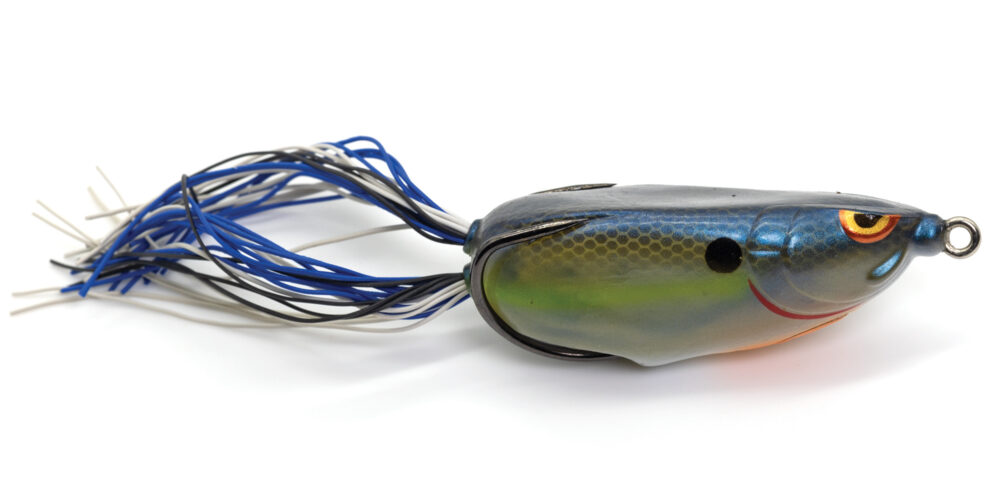
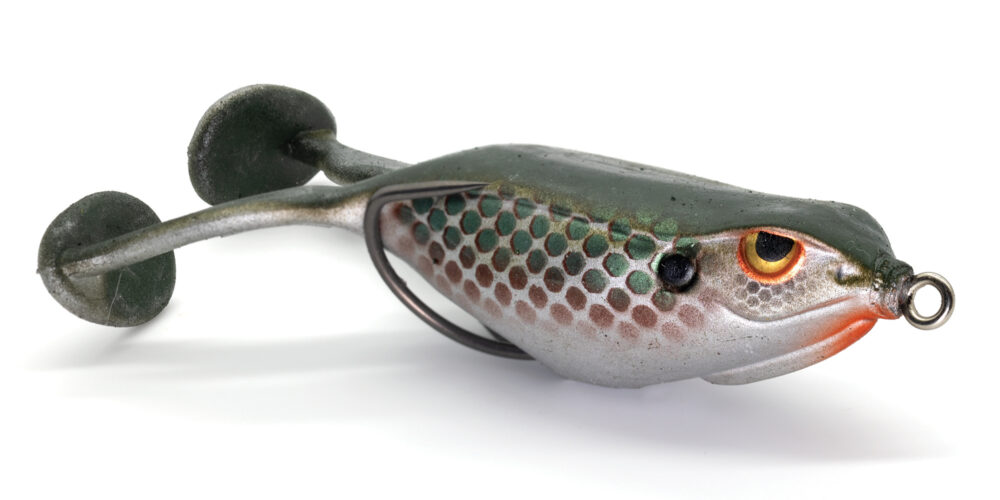
Roumbanis learned to frog on famed California waters like the Sacramento River Delta. He designed his own deep-bodied, textured Boom Boom Frog along with a companion model, the Boom Boom Poppin’ Frog, both marketed by Stanford Baits. The former was designed to walk. The Poppin’ Frog, he says, offers a more subtle action than other lures in the category. “It spits more than pops,” he says. “It has more of a pencil popper design, best worked in open water situations like next to laydowns, under boat docks and undercut banks. It excels in pressured water.”
For the past two seasons, Cox has frogged with prototypes of two Berkley frogs, a regular hollow-body (the Swamp Lord) and a popping version. The baits were released to the public at the 2023 ICAST show.